The Unknown Hitler reveals curious details about Fuhrer's life
The book The Unknown Hitler based on recollections of Heinz Linge and Otto Günsche is published in Russia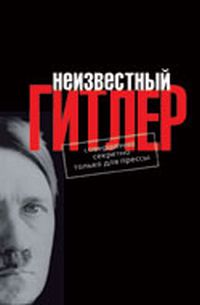 Pravda.Ru has already reported that this year in spring the book about Hitler (Das Buch Hitler) was published in Germany. The book was written for one reader only. For Stalin. Translation into English is expected in the beginning of November. This summer thу book under the title The Unknown Hitler was published in Russia by the publishing house Olma-Press.
Pravda.Ru has already reported that this year in spring the book about Hitler (Das Buch Hitler) was published in Germany. The book was written for one reader only. For Stalin. Translation into English is expected in the beginning of November. This summer thу book under the title The Unknown Hitler was published in Russia by the publishing house Olma-Press.
It is worth reminding that the book is based on the statements by two SS officers from that were close to Hitler and who were watching his life closely during many years. Theses are Heinz Linge, Fuhrer's valet, and Otto Günsche, Hitler's personal adjutant.
Pravda.Ru interviewed Dr. Matthias Uhl, one of the authors of unclassified materials from Stalin’s personal archive, which have been kept for 50 years under top-secret stamp. At the moment Dr. Uhl is working in the recently opened German Historical Institute in Moscow (Deutsches Historisches Institut Moscau).
Question: What is in your opinion the main difference between the new book and other biographies of Fuhrer? I mean classical works of Joachim Fest, Ian Kershaw or Sebastian Haffner.
Answer: This is an original historical document. When the reader opens the book, he understands that these reminiscences differ from other documents on similar topic by extraordinary conditions, in which they were written. They were in solitary prison cells and could not coordinate their testimonies. Investigators of the special services were constantly looking for inaccuracy in their testimonies. Both prisoners are precise in reproducing Hitler's statements if we compare them with the published or stenographic records of Hitler’s speeches. Only minor uncertainties.
Q: If I understood correctly, you translated the book, as there were no originals of the interrogations written in Germans that remained.
A: Unfortunately, only some of the fragments of interrogations remained. Another variants of this book are only in Russian. We had a very good translator Helmut Ettinger. He worked for Honneker before and was an interpreter of Gorbachev with his famous phrase that became a German aphorism: “The one who is late is punished by life” (Wer zu spät kommt, den bestraft das Leben). So we may say that a really good German publication came out.
Q: Did the book become a bestseller in Germany?
A: Yes. More than 20 thousand copies have been sold. Great reader's interest. The most important is that the book presents a new view on the Third Reich. When Linge came back to Germany he published his memoirs that differ greatly from what he wrote in the Soviet Union. He simply forgot some of the events and presented others in a different way.
Q: Matthias, don't you think that the book is rather tendentious?
A: Of course, it is. However, it is a unique and very interesting document for a historian. It has three different levels, three different layers so to say: the recollections of Linge and Günsche, Soviet view on the subject represented by Fyodor Parparov (who directed and controlled the work of translators) in corrections and commentary and, finally, the beginning of the cold war. For example, the way they think of English and Americans.
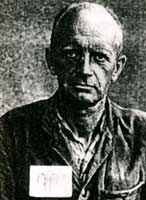 Q: Yes, the passages about the too much of appraisal of American industry are especially good. They say there are no special achievements there, only mediocrity and huge promotion. American officers are businessmen dressed in military uniforms and concerned for their own skins. The British left their French allies to the mercy of fate in Dunkirk. This was certainly written under the influence of Churchill's Fulton speech.
Q: Yes, the passages about the too much of appraisal of American industry are especially good. They say there are no special achievements there, only mediocrity and huge promotion. American officers are businessmen dressed in military uniforms and concerned for their own skins. The British left their French allies to the mercy of fate in Dunkirk. This was certainly written under the influence of Churchill's Fulton speech.
A: Actually the reader can easily guess what belongs to Linge and Günsche and what has to do with the commentary by Parparov and his colleagues from the People's Commissariat of Internal Affairs (NKVD).
Q: Did serious experts on the Third Reich's history who had already read the book find anything new there?
A: The fact that was absolutely new is that Hitler personally issued an edict for using gas chambers. He obtained the projects from Himmler. That is very important for historians.
Q: As a person, who is interested in this period of history, I got the impression that I had already read about this somewhere.
A: Of course. After all, the book was written three years after the war, and it's been 60 years since then.
Q: Could it be that some episodes of this book were published before? I mean was it fully classified?
A: Probably, this could have happened. In the end of the 1960s Soviet historians and their colleagues from the Federal Republic of Germany were discussing whether Hitler had shot himself or had only taken poison. Lev Bezymensky partly published some documentsto show that has the original information at his disposal.
Q: Even just this single book convinced you that Hitler had shot himself, didn't it?
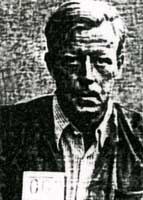 A: Yes. In the afterword (the German publication is meant) we are describe in detail the operation Myth, within which Hitler's suicide was studied. In 1946 Günsche and Linge were taken to Berlin, where they examined the bunker under the Reich's chancellery one more time. They scrutinized the sofa, on which Hitler shot himself. There were no doubts that Hitler had shot himself to death.
A: Yes. In the afterword (the German publication is meant) we are describe in detail the operation Myth, within which Hitler's suicide was studied. In 1946 Günsche and Linge were taken to Berlin, where they examined the bunker under the Reich's chancellery one more time. They scrutinized the sofa, on which Hitler shot himself. There were no doubts that Hitler had shot himself to death.
Q: Matthias have you watched the film Der Untergang?
A: Yes, I have.
Q: What is your impression?
A: This is a feature film rather than a documentary. I think that the greatest advantage of the book The Unknown Hitler is that it shows the last months of the Third Reich. The situation in bunker, in Berlin itself. The Göhring's betrayal. Himmler's betrayal.
Q: Soviet film epic Liberation has actor Fritz Ditz starring. Germans say he even managed to reproduce Austrian accent of Fuhrer. Does Bruno Gantz also speak with the accent? Did he play Hitler's role well?
A: I think he was rather good. But it seemed to me he spoke with a Swiss accent. It is great that Bruno Gantz showed this monster in the form of human, because there is a risk that it could happen again. This evil should be fought.
Q: Russian publishers probably tried not to overload the book and turned it into academic work, turning down the afterword. What is it about?
A: It once again describes how the book was created. There are archival references to the material where the information was taken. We explained to the German reader what the Soviet propaganda is etc.
Q: Hitler is caricatured in the book. Was this made especially for Stalin?
A: He was like that in reality. Sometimes it looks like a caricature, but in fact he was strange. The main advantage of the book is that it is a view from the inside. Linge and Günsche saw many things that nobody else didn't and couldn't see. For instance, how after declaring war to the US (on 11 December 1941) Hitler was reading suspense novels, drawing strange building projects together with his main adjutant Schaub, looking at the colored pictures of naked Paris dancers through a projector and walking with his Scotch terrier.
Q: Did any of them leave memoirs?
A: Only Linge. First they were published in a magazine. Then they were revised and published as a separate book in 1980s. Günsche did not write anything because he thought that journalists didn't want to write as he wished. In autumn of 2003 when I found the dossier I read that Günsche had not written anything about his service. Then I decided to publish this book. The most interesting fact, to my mind, is that Russian historians knew about this document and used it but none of them decided to publish this really interesting document. I don’t know why.
Q: As I know German Historical Institute, where you are working, has opened only recently. Did you have any problems?
A: There were only problems concerning the status of the institute. Both from the German and the Russian sides. Now we've solved all the problems and I think we are working with success.
For reference:
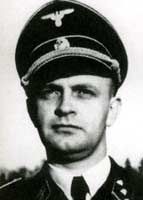 Heinz Linge (born 23.03.1913 in Bremen. Died 24.06.1980 in Bremen). A mason with unfinished education in construction. In 1932 he joined NSDAP and SS. In 1933 he was admitted to Leibstandart Adolph Hitler. In 1933 after studying at the hotel business school he became Hitler’s orderly. He was Hitler's personal servant since 1935. SS Sturmbahnfuhrer. He was taken Soviet prisoner 02.05.1945. For several years he had been giving testimonies to NKVD. In 1950 he was sentenced to 25 years in prison. In 1955 he was released and sent to the Federal Republic of Germany.
Heinz Linge (born 23.03.1913 in Bremen. Died 24.06.1980 in Bremen). A mason with unfinished education in construction. In 1932 he joined NSDAP and SS. In 1933 he was admitted to Leibstandart Adolph Hitler. In 1933 after studying at the hotel business school he became Hitler’s orderly. He was Hitler's personal servant since 1935. SS Sturmbahnfuhrer. He was taken Soviet prisoner 02.05.1945. For several years he had been giving testimonies to NKVD. In 1950 he was sentenced to 25 years in prison. In 1955 he was released and sent to the Federal Republic of Germany.
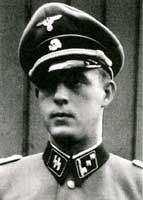 Otto Günsche (born 24.09.1917 in Yen. Died 02.10. 2003 in Lomar near Bonn). In 1931 he joined Hitlerjugend. In 1934 he was admitted to Leibstandart Adolf Hitler. He was the member of SS. In 1935 he joined NDSAP. He studied in the military college during 1941-1942. He was Hitler's personal adjutant from January till August 1943. Then he was a commander of the SS tank division and later was appointed Hitler's personal adjutant again. In 1944 he became SS Sturmbahnfuhrer. He was taken Soviet prisoner 02.05.1945. In 1950 he was sentenced to 25 years of correctional labor. In 1955 he was transferred to the German Democratic Republic and released in 1956. Soon after that he escaped to the Federal Republic of Germany.
Otto Günsche (born 24.09.1917 in Yen. Died 02.10. 2003 in Lomar near Bonn). In 1931 he joined Hitlerjugend. In 1934 he was admitted to Leibstandart Adolf Hitler. He was the member of SS. In 1935 he joined NDSAP. He studied in the military college during 1941-1942. He was Hitler's personal adjutant from January till August 1943. Then he was a commander of the SS tank division and later was appointed Hitler's personal adjutant again. In 1944 he became SS Sturmbahnfuhrer. He was taken Soviet prisoner 02.05.1945. In 1950 he was sentenced to 25 years of correctional labor. In 1955 he was transferred to the German Democratic Republic and released in 1956. Soon after that he escaped to the Federal Republic of Germany.
On the photos: prisoners Heinz Linge and Otto Günsche shortly before their release in 1955.
Igor Bukker
Subscribe to Pravda.Ru Telegram channel, Facebook, RSS!




